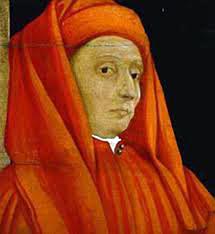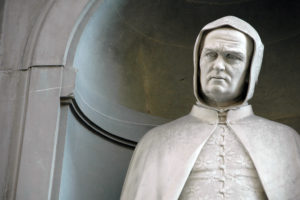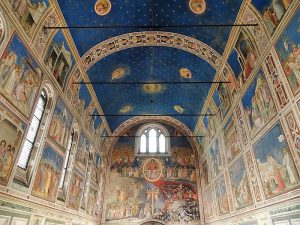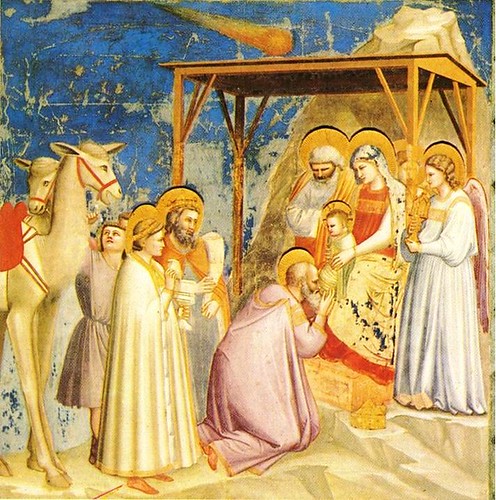Giotto da Bondone was the greatest italian painter before Renaissance. Initiator of a new figurative art style, oriented towards naturalistic and humanistic subjects, in opposition with Byzantine rigidity. He was revolutionary and an inspiration for all the later Italian Renaissance artists.

Life
Giotto di Bondoneborn in 1267 and died in January 8, 1337 inFlorence, simply known as Giotto, he was an Italian painter and architect. He’s believed to have been a pupil of the Florentine painterCimabueand to have decorated chapels inAssisi,Rome,Padua,Florence, andNapleswith frescoes and panel paintings in tempera. Because little of his life and few of his works are documented, attribution and a stylistic chronology of his paintings remain problematic and often highly speculative.

image source:https://search.creativecommons.org/photos/959d4f0b-4c3d-4825-a12b-1af97d841354byMcPig
What were his major works?
Among the most important works of Giotto there is theCross of Santa Maria Novella, realized in Florence around 1290, in which the imagine of Christ moves away from iconography. When he goes to Padua he creates a cycle of frescoes for theScrovegni Chapelin which some saint’s life and the allegories ofVices and Virtuesand theLast Judgementare narrated.
Other important works are theOgnissanti Madonna,the frescoes in theBasilica of Santa Croce,thePeruzzi Chapelwhere theLife of Saint John the BaptistandSaint John the Evangelistare frescoed and theLife of Saint Francisin theBardi Chapel.

image source:https://search.creativecommons.org/photos/f931be66-1ca6-45b7-8ef2-de74be65dc9ebyProf. Mortel
Giotto was also an appreciatedarchitect, in fact he built the first part of the Bell Tower for the Opera del Duomo, which later took his name. Unfortunately, many of Giotto’s works have been lost or destroyed, while those found are shown in some international museums.

image source:https://search.creativecommons.org/photos/ae787285-2f5b-4235-adcf-e913b3121d94bynathanh100
How can we identify Giotto’s style?
The main subject in Giotto’s works is the human beings, characterized by the expressiveness of their feelings and moods, all this rendered with great realism creating theillusion of spaceovercoming the Byzantine style. Giotto’s figures aresolidly three-dimensional, they seem to come to life due to a close observation of the faces and gestures, even the clothes appears to hang naturally highlighting theshapesand theheaviness of the fabric.

image source:https://search.creativecommons.org/photos/b3347f14-c202-4c52-a225-cef8436ea053byProf. Mortel
- COMPOSITION
Giotto was able toinvolve the viewerin the work, thanks also to the way he arranged the subjects, allowing the viewer to integrate. To focus the attention of the spectators he usedhorizon lines,diagonal linesandother types of geography.

image source:https://search.creativecommons.org/photos/59fa689d-42ee-4e5f-a528-d7fe893e0d04byCarla216
- COLOR PALETTE
Di Bondone goes against the tradition of his period, substituting the blue for the sky in favor of thegoldpreferred by Medievalists. His subject’s faces, clothing and hair are characterized by the use ofauthentic colorssuch as bold green, orange, yellow and red allowing in this way tocommunicate emotions.

image source:https://search.creativecommons.org/photos/0b6459a7-ee6d-4f16-971e-f485ae24702cbyancientartpodcast.org
- USE OF LIGHT /SHADE
Thanks to a careful use oflightsandshadows, Giotto has been able to give weight and shape to his subjects, thus transmitting asense of realityto the viewer. The use of this technique, definedchiaroscuro, made sure that the body parts of the subjects represented were emphasized.

image source:https://search.creativecommons.org/photos/d92d1fd9-a220-49ff-9dbf-8dd386f3e9c3byGeorge M. Groutas
- MOOD, TONE & EMOTION
Giotto’s work clearly shows the attention he places on human expressions, studied through careful observation of the variousemotional states, such as fear, joy, anger, despair and many other. In this way the subjects represented preserve their humanity.

image source:https://search.creativecommons.org/photos/d1a1b479-ad21-4f1f-8bfa-15e444b140dbbyRufus46
info source:
http://www.giottodibondone.org/
https://www.discovertuscany.com/tuscany-history-and-culture/great-tuscans/giotto.html
https://www.britannica.com/biography/Giotto-di-Bondone#toc234069main
https://en.wikipedia.org/wiki/Giotto#Style
http://www.artble.com/artists/giotto_di_bondone/more_information/style_and_technique
